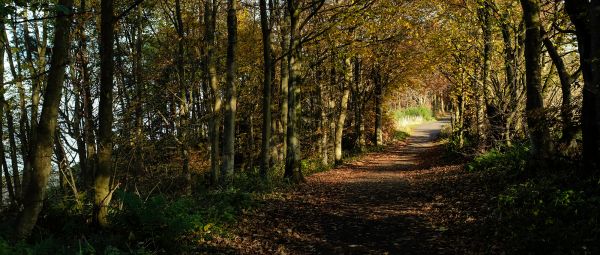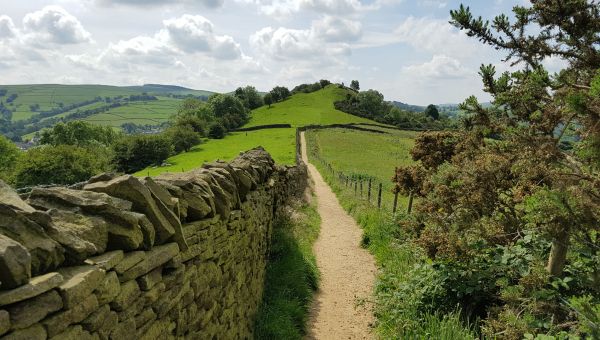Saving lost paths
By protecting historic paths we are safeguarding our rights of access for the future

What’s involved with saving lost paths
The Ramblers Don’t Lose Your Way campaign identified and mapped over 49,000 miles of potential lost paths. The map is available for anyone to explore.
Whilst many of the paths identified may be historical rights of way, they are not currently recorded on the legal map of rights of way (the definitive map) and some may have been legally extinguished in the past 120 years. When paths are not recorded, we cannot guarantee that they are public rights of way. This means they lack the legal protection they need making them vulnerable to obstruction, closure, or becoming so overgrown that they are impassable..
By protecting these historic paths, we are safeguarding our landscape and our right to access it for the future. Many of these rights of way will also help to create a better path network, linking up other paths, completing circular routes or resolving dead ends.
Concerns that may arise
Paths that go through a house or garden
People can naturally be worried if they see a historical path that today would pass through their house or garden. There is absolutely no need for concern in this regard. The Ramblers are not looking to claim lost rights of way through buildings of any type, including houses. If the original route is judged to be an improvement to the path network it may be appropriate to apply for a diverted route.
Conflict with farmers and landowners
Agriculture makes up 70 per cent of land use in the UK and contains a significant proportion of the nation’s paths. Without these rights of way, the places we can walk would be very limited. Many landowners do a fantastic job maintaining paths and welcoming walkers on their land and the Ramblers always seeks to work in cooperation with them wherever possible. Disagreements over path applications can occur and the Ramblers would like to see the Government improve the process for applicants, landowners and local authorities alike.
The volume of paths applications
With 49,000 miles of potential lost paths, Ramblers’ efforts will be focused on those paths that add real value to the path network. This includes resolving dead ends, completing circular routes, creating better connections and provide routes in areas which lack off road walking opportunities.
Lost paths missed from the Don’t Lose Your Way map
The Don’t Lose Your Way map used citizen science and digital technology to map as many potential lost paths as easily and speedily as possible. Despite finding 49,000 miles of potentially lost paths, we know that are likely more out there. If you are aware of a lost path that’s not currently marked on our map, contact DLYW@ramblers.zendesk.com.
Paths on the map that are not rights of way
It is very possible that some of the lost paths identified on the Don’t Lose Your Way map may not in fact be rights of way. They may have been identified erroneously or there may be insufficient evidence to make a viable application for a lost right of way. As the project continues, we will identify and avoid these paths.
Opportunities to support the project
Volunteer to get involved with the next phase of research
For any lost path we want to put back on the map, we now need to prove that it was a right of way in the past. With so many paths to save, we’re looking for the help of hundreds of volunteers. Anyone who is keen to help improve the path network can join in. You don't need to be a Ramblers member. Sign up as a volunteer and we’ll be in touch with more information.
Donate to help fund our work
The Don't Lose Your Way project has been made possible by the generous support of the Ramblers Holidays Charitable Trust, the players of the People Postcode Lottery and the East Berkshire group of the Ramblers.
As a charity we rely on the generosity of our supporters to continue and grow our work to protect and enhance our treasured path network. You can make a one-off or a regular donation to the Ramblers at https://www.ramblers.org.uk/get-involved/support-us/donations/make-a-donation.aspx. Your donations will be used where the need is greatest to protect the places we all love to walk, now and for future generations.

Claiming unrecorded public rights of way
Unrecorded paths are vulnerable to development and unresolved problems. It is important they are claimed and get the protection they are entitled to.

A brief history of public rights of way
How our network of public rights of way came to be and why it is so important we protect these ancient routes.

The Definitive Map
The Definitive Map is an important legal record of public rights of way in England and Wales. But how and why did it come to exist?